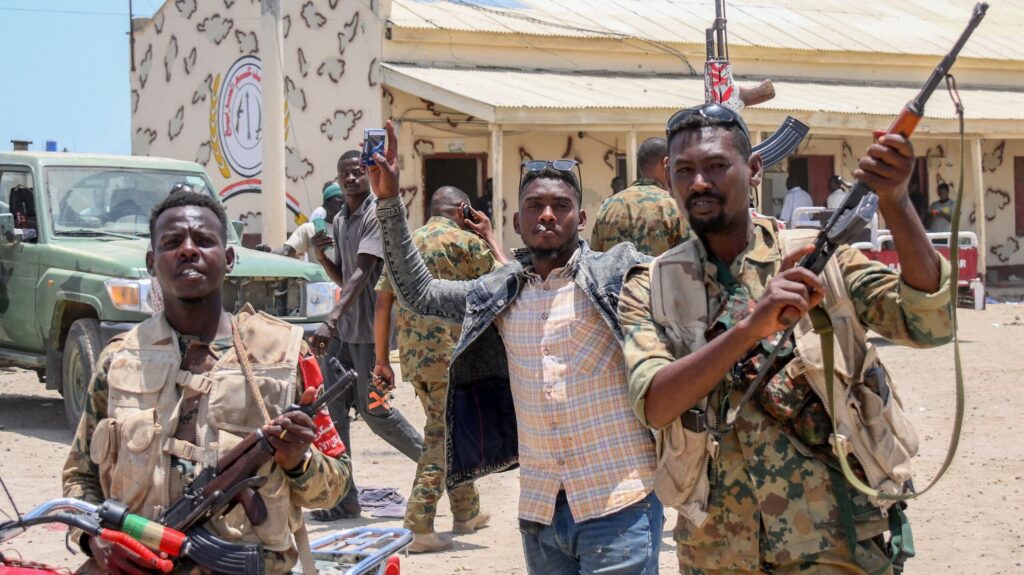Understanding the Current Situation in Sudan
Two years after a military coup plunged Sudan into chaos, the nation remains embroiled in a brutal conflict between the army and a powerful paramilitary force known as the Rapid Support Forces (RSF). This ongoing struggle has resulted in a staggering death toll exceeding 150,000 and has forced around 12 million individuals to abandon their homes, as highlighted by the United Nations, which has described the situation as the world’s largest humanitarian crisis.
An Overview of Sudan
Located in northeastern Africa, Sudan is one of the continent’s largest nations, spanning approximately 1.9 million square kilometers (734,000 square miles). The population is predominantly Muslim, and both Arabic and English serve as the official languages. Prior to the onset of war, Sudan ranked among the world’s poorest countries, with an average annual income of merely $750 (£600) per person. The ongoing conflict has only exacerbated these conditions, leading to an 80% decline in state revenue reported by Sudan’s finance minister last year.
The Combatants: Army vs. RSF
The seeds of discord took root after the 2021 coup, where a council of generals, led by General Abdel Fattah al-Burhan, emerged to govern. Accompanying him was General Mohamed Hamdan Dagalo, known as “Hemedti,” who leads the RSF. Tensions arose over differing visions for Sudan’s future and the contentious issue of integrating the RSF with the national army.
Both generals were concerned about preserving their positions and influence, leading to an inevitable clash. The RSF’s formation dates back to 2013, rooted in the notorious Janjaweed militia implicated in ethnic cleansing in Darfur. General Dagalo has since amassed considerable power, with interests including gold mining.
The Outbreak of Hostilities
Hostilities erupted on April 15, 2023, amidst escalating tensions and a mobilization of RSF forces nationwide perceived as a military threat. Initial attempts at dialogue to de-escalate the situation failed, igniting widespread violence.
The Military’s Authority in Sudan
These conflict dynamics represent yet another chapter in a protracted struggle for governance following the ousting of long-time President Omar al-Bashir in 2019 during widespread protests. A joint civilian-military government briefly flourished but was dismantled by a subsequent coup led by General Burhan in late 2021. Although a framework agreement was reached in December 2022 to restore civilian governance, further negotiations faltered.
Territorial Control
The struggle for control initially centered on key infrastructure but has since spread into urban areas, tragically affecting civilians. Currently, the RSF controls significant portions of Darfur and parts of Kordofan, while the military has secured much of northern and eastern Sudan, including vital ports. Recent military successes include the recapture of significant locations within the capital, Khartoum.
Civilians: The Silent Victims
The conflict’s toll on civilians has been catastrophic, with reports indicating imminent famine and widespread human rights abuses. Allegations of genocide, particularly against non-Arab communities in Darfur, have emerged, with the UN warning of ethnic cleansings used as a weapon of war.
Global Reactions
The international community’s response has been criticized as inadequate, despite multiple humanitarian pledges. Efforts at negotiations have largely stalled, with significant outside involvement from nations like Chad, Libya, and the UAE, although the UAE denies these allegations.
Current Situation Overview
| Aspect | Details |
|---|---|
| Current Death Toll | Over 150,000 |
| Internally Displaced Persons | Approximately 12 million |
| Key Players | Sudanese Army, RSF |
| Ongoing Humanitarian Crisis | Classified as the largest globally |
The fighting in Sudan remains a complex issue marked by historical grievances, ethnic tensions, and competing ambitions for power. As the international community watches and struggles to propose lasting solutions, the humanitarian needs of the millions affected persist and grow more urgent.


